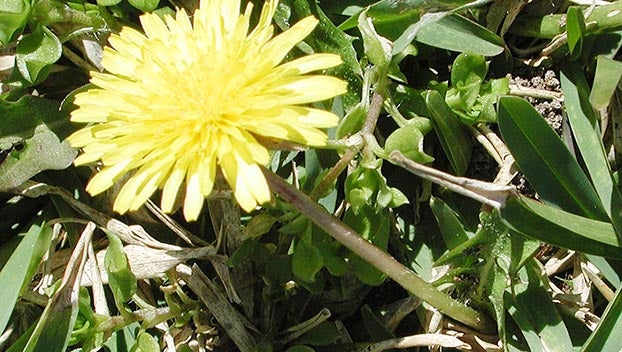MASTER GARDENER — Effective weed control begins with knowledge
Published 12:22 am Thursday, July 21, 2022

- To some gardeners, dandelions have an attractive bloom but are considered a common weed. (Courtesy Photo)
|
Getting your Trinity Audio player ready...
|
Gardeners, it’s another beautiful summer morning here in Southeast Texas.
Rather than moving from gardening task to task, as is typical most days, I took the time to slowly walk around my yard this morning (coffee cup in hand), stopping at each flower bed to view flowers in bloom, stopping long enough to smell a few of the blooms.
Leaving the flower bed areas, I walked over the raised vegetable gardens, making mental notes of herbs and vegetables to harvest later in the day (especially the Chinese long beans), all the while listening to a frog’s deep, throaty calls for affection.
I was able to totally relax, allowing my mind to wander for a few peaceful moments. We always seem to be in such a rush — our lives are constantly bombarded with the pressures of everyday life! Take the time to enjoy the moment!
Today, I’m going to discuss weeds in general. Often, my attempt to gain the upper hand on weeds in my flower beds and vegetable gardens seems futile — as I’m constantly tugging, pulling and digging out weeds year-round.
I’m determined not to allow them to take over garden areas. Just about everywhere you look you see weeds of some sort. Weeding is the bane of gardening, and as gardeners we want our flower beds to look nice and neat.
Further, we want our vegetable gardens to be weed free, since weeds rob our plantings of necessary moisture and nutrients and can reduce harvest drastically.
Let’s gain some understanding of weed types by category (not are not scientific categories), including a few of the best ways to manage them.
Keep in mind that weeds are always going to be with us and there is no one best way of controlling them. I choose not to use herbicides, since many herbicides kill beneficial insects, pollinators and can severely harm the environment.
Annual – such as lamb’s quarters, yellow oxalis and chickweed only live one year. Dig or pull these weeds before they develop seeds as they cover the ground with seeds. If you can’t pull them or hoe them without damaging other garden plants, cut the stems at or below soil line to prevent regrowing.
Taproot – dandelions have long, strong roots. Many of these types of perennials can regrow from any part of their root that was left in the soil. Biennials, such as bull thistle will die after the second year of blooming. Use a straight-point trowel to dig down next to the root, then pry it out or use a flat head spade for digging large, deep taproots.
Rhizomatic – are difficult to control as they spread horizontally under the soil and when cut, they will resprout. Stinging nettle and quack grass can be removed using a trowel, claw or spading fork to loosen the soil around the weeds.
Tough – include chickweed, plantain, and dock which like hard, compacted clay soil. An oscillating stirrup hoe is best used, as it will loosen the soil, making them it easier to tug out.
Monsters – are the most difficult weeds to remove and control. Weeds such as Japanese knotweed and bindweed and have deep, vigorous roots. The best way to get rid of them is by depriving them of light. Place heavy tarps over them for several weeks, only removing them when they are dead.
Use the following tips to help reduce the weed population in your gardens:
STOP (Rototilling) – overworking the soil is one of the biggest culprits to hosting weeds. Many weed seeds are resting on the soil surface, waiting to germinate once covered. Tilling also disrupts the eco-cycle of worms and other organisms.
START (Mulching) – is the easiest, most effective method for creating an almost weed free garden. Adding a heavy layer of mulch (3-4 inches) over a layer of newspaper or cardboard will help control weeds year-round. Add more mulch as necessary but do not disturb the top layer of mulch.
STOP (Hoeing) – vigorous hoeing disturbs the soil making it more susceptible to weed seed germination. This also goes for disturbing the top layer of mulch by raking or turning. Simply pull the few weeds that appear.
START (Cover Crops) – planting fall cover crops they keep the garden soil covered from incoming weed seeds. Additionally, they add organic matter to the soil, fixing nitrogen levels for the following season, while minimizing soil erosion and eliminating the need for rototilling.
If you truly want a weed-free or near weedless garden, it doesn’t have to take hours on end to do the task, just take a stroll thru your garden, smelling the flowers along the way and pulling a few weeds!
Master Gardener certification classes
Orange County Master Gardener certification classes will begin with orientation Aug. 25th.
Classes are Thursday evenings.
The class fee is $150, which includes training handbook, supplies and speakers’ fees.
Please visit our website, then click JOIN MG link for more information.
John Green is a Certified Texas Master Gardener. If you have gardening questions or need more information, contact the Orange County Master Gardeners Helpline at 409-882-7010 or visit txmg.org/orange, Orange County Texas Master Gardeners Association on Facebook or email extension@co.orange.tx.us.





